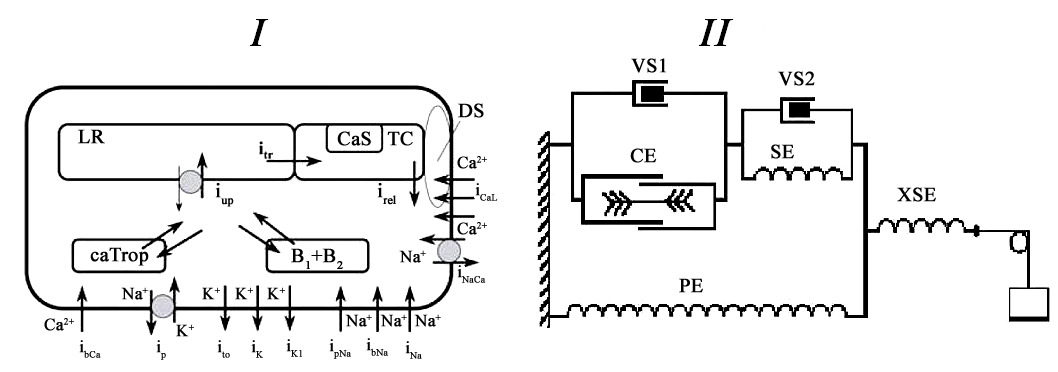
Panel I: Scheme of the ionic currents accounted for in the cardiomyocyte model. The currents modeled ( i_x) contribute to the development of action potential and/or calcium transient. Here i_CaL-Ca2+ influx via L-type Ca2+ channels; i_rel-Ca2+ release from terminal cisterns (TC) triggered by Ca2+ entered from dyadic space (DS); Ca_Trop-concentration of Ca2+ bound by specific troponin C to activate the contractile element (CE) from the rheological scheme (see Panel II); B_1, B_2-concentration of Ca2+ bound by a fast and a slow buffer; i_up -Ca2+ uptake by the sarcoplasmic reticulum pump into longitu-dinal reticulum (LR); i_tr -Ca2+ diffusion between LR and TC; CaS-concentration of Ca2+ complexes with calsequestrin; i_NaCa -sodium–calcium exchange current; i_bCa -background Ca2+ current.
Panel II: rheological scheme of a single cardiomyocyte/homogeneous myocardium sample including contractile element CE, three passive elastic elements: parallel element PE , series element SE, extra-series element XSE and two viscous elements VS1 and VS2. The version of the model used in this study actually deals only with one viscous element VS1, i.e. we assumed here the coefficient of viscosity of the element VS2 to be constantly equal to 0.